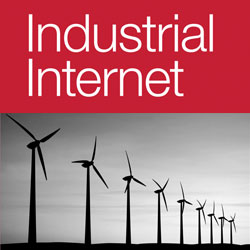Woopiedoo! I have a post in today’s O’Reilly SOLID blog (which is, among other things, promoting their SOLID conference in SF next month) about how the Internet of Things will transform manufacturing.
In it, I emphasized the manufacturing variation on the two transformative aspects of the IoT that I think will characterize its effect on every aspect of our lives and economy:
- for the first time, we will have real-time information on the current state of all sorts of things
- we will also be able to share that information, again, on a real-time basis, with everyone who could benefit from that information.
We’re already starting to see signs of that transformation, with GE’s Durathon battery factory (with 10,000 sensors on the assembly line plus others designed into the batteries themselves), SAP’s Future Factory, and Siemens’ Electronic Works factory. As the price, size and energy demands of sensors continues to plummet, the trend will accelerate.
As a result, manufacturing will no longer be isolated from real-time activities in the rest of the enterprise:
- “Designing sensors into products, rather than adding them on retroactively, will allow companies to identify defective products immediately, rather than waiting for post-production testing.
- The built-in sensors will also allow companies to create new revenue streams. They will be able to sell customers real-time data on product operations that will allow the customers to optimize their use, and they may also choose, instead of selling the products, to lease them, with the price determined dynamically based on how much the product is actually used — take, for instance, jet turbines that are now priced on the basis of how many hours they actually operate.
- The product design cycle will accelerate. Companies will be able to monitor a product’s actual usage in the field, then implement more rapid upgrades.
- ‘Just-in-time’ supply chains will become even more efficient as real-time production data triggers resupply orders, just as distribution systems will become more closely integrated on the other end of the production cycle.”
The SOLID conference focuses on the convergence of hardware and software. It’s about time the two are fully integrated, and the results will be incredible!

